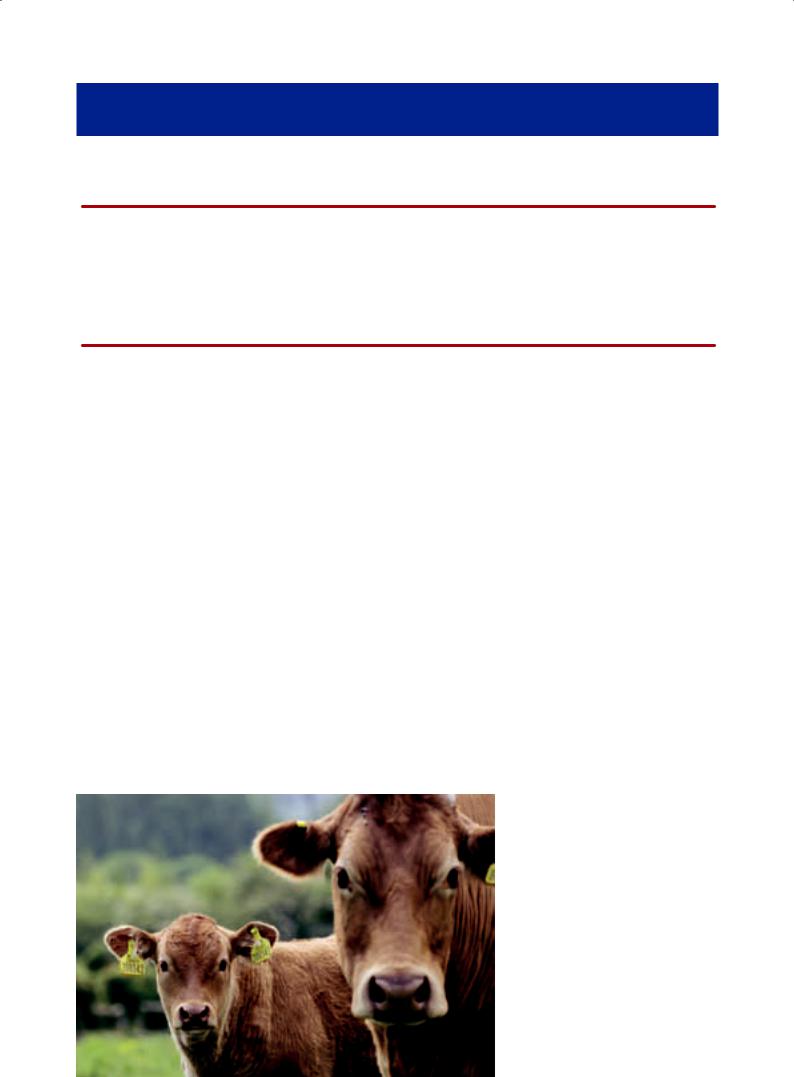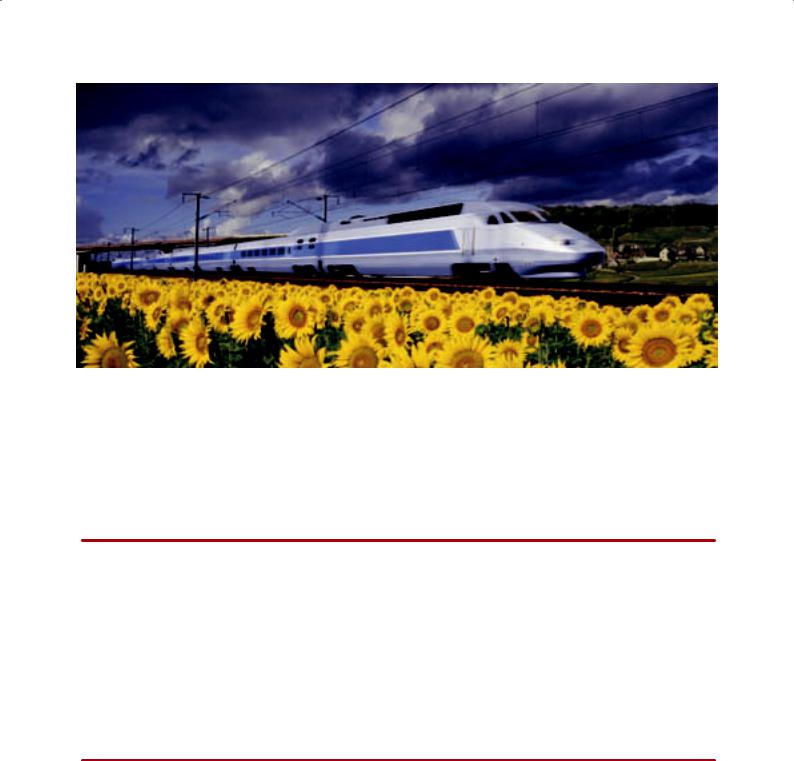
Для практ. заняття №3 Як працюють інституції ЄС (2013)
.pdf
Y o U R g U I D E t O t H E E U i N S T I T U T I O N S |
29 |
|
The European Court of Auditors
Helping to improve EU financial management
Role: |
To check that EU funds are collected and used correctly, and help improve EU financial |
|
management |
Members: One from each EU Member State
Location: Luxembourg
XX eca.europa.eu
The European Court of Auditors (ECA) is the independent external audit institution of the European Union.
It checks that the Union’s income has been received correctly, that its expenditure has been incurred in a legal and regular manner, and that financial management has been sound. It performs its tasks independently from the other EU institutions and governments. In doing so, it contributes to improving the management of European Union funds in the interests of its citizens.
What the European Court of Auditors does
The European Court of Auditors’ main role is to check that the EU budget is correctly implemented — in other words, that EU income and expenditure is legal and regular, and financial management is sound. This work helps to ensure that the EU is managed efficiently and effectively. To carry out its tasks, the ECA undertakes detailed audits of EU income or expenditure at all levels of the administration of EU funds. It carries out on-the-
spot checks at the organisations managing the funds, or the beneficiaries receiving them, both in the EU Member States and in other countries. Its findings are published in annual and specific reports, which draw the attention of the Commission and the Member States to errors and weaknesses found, and make recommendations for improvement.
Another key function is for the European Court of Auditors to help the budgetary authority (the European Parliament and the Council) by providing them with an annual report on the implementation of the EU budget for the previous financial year. The ECA’s findings and conclusions in this report play an important role in Parliament’s discharge decision on the Commission’s handling of the budget.
The European Court of Auditors also gives its opinion on new or revised EU regulations with financial impact at the request by the other EU institutions. The ECA can also issue position papers on other issues on its
own initiative.
Ear tags on cows help EU auditors keep track of where EU money has been spent.
© ImageGlobe

30 |
H o w t H E E u R O P E A N U n I O N w o R k s |
|
How the European Court of Auditors works
The European Court of Auditors operates as a collegiate body of 28 Members, one from each EU country.
The Members are appointed by the Council, after consultation with the European Parliament, for a renewable term of six years. They are chosen for their competence and independence, and work full-time for the ECA. They elect one of their number as President for a term of three years.
To be effective, the Court of Auditors — like any other supreme audit institution — must remain independent of the institutions and bodies it audits. The ECA is free to: select its audit topics, the specific scope and approach to be followed; decide how and when to present the results of its selected audits; and choose the publicity to be given to its reports and opinions. These are important elements of independence.
The European Court of Auditors is divided into chambers, which prepare the reports and opinions for adoption by the ECA. The chambers are supported by highly qualified staff originating from all Member States. The auditors frequently audit in the other
EU institutions, the Member States and other beneficiary countries. The ECA also cooperates closely with supreme audit institutions in the Member States. Indeed, although the ECA’s work largely concerns the EU budget — for which the Commission retains overall responsibility — in practice, management of over 80 % of expenditure is shared with national authorities.
The European Court of Auditors has no judicial powers but through its work brings irregularities, weaknesses and cases of suspected fraud to the attention of the EU bodies responsible for taking action, including the European Anti-Fraud Office (OLAF). Since its creation in 1977, the ECA has made a significant impact on the financial management of the EU budget through its objective reports and opinions. In doing so, it has fulfilled its role of independent guardian of the financial interests of the citizens of the Union.

Y o U R g U I D E t O t H E E U i N S T I T U T I O N S |
31 |
|
The European Economic and
Social Committee
The voice of civil society
Role: |
To represent organised civil society |
Members: 353 from all EU Member States
Location: Brussels
XX eesc.europa.eu
The European Economic and Social Committee (EESC) is an advisory body of the European Union. It is made up of representatives of organisations of employers, of the employed and of other civil society representatives, notably in socioeconomic, civic, professional and cultural areas. Representing the general interest, the Committee delivers opinions to the Commission, the Council and the European Parliament. The members of the EESC are not bound by any mandatory instructions and work in the Union’s general interest. The EESC thus acts as a bridge between the aforementioned EU institutions and
EU citizens, promoting a more participatory,
more inclusive and therefore more democratic society in the European Union.
What the EESC does
This Committee fulfils three key missions:
XXhelping to ensure that European policies and legislation tie in better with economic, social and civic circumstances on the ground, by assisting the European Parliament, Council and European Commission, making use of EESC members’ experience and representativeness, dialogue and efforts to secure consensus serving the
general interest;
XXpromoting the development of a more participatory European Union which is more in touch with popular opinion, by acting as an institutional forum representing, informing, expressing the views of and securing dialogue with organised civil society;
XXpromoting the values on which European integration is founded and advancing, in Europe and across the world, the cause of democracy and participatory democracy, as well as the role of civil society organisations.
The Committee shall be consulted by the European Parliament, by the Council or by the Commission in many fields foreseen by the treaties. These domains have been progressively extended, so that the scope of the EESC’s action has been further widened. In addition to the range of compulsory consultation, the Committee may issue opinions on its own initiative in cases in which it considers that such action is important to defend the interests of civil society. The EESC delivers around 170 opinions on a yearly basis, of which roughly 15 % are issued on its own initiative.
A key feature of the EESC’s work is the drive to build consensus between its members who represent a wide range of interest groups — for example, between members of employers’ groups and those who represent workers’ organisations. The Committee is well positioned to advise on the impact of proposed new laws on the ground — on people’s lives — and how legislation can be adapted to gather wide public support. Boosting transparency in EU decision-making and building close links with national civil society organisations are also important elements of the Committee’s work.
How the EESC works
The 353 members of the EESC are nominated for a five-year renewable term by their governments and appointed by the Council of the European Union.
Members are drawn from Europe’s different economic and social interest groups and, once appointed, they work independently of their governments. The members of the Committee are organised internally into three groups: employers, employees and other interests.
The EESC elects its President and two Vice-Presidents for a term of two and a half years. EESC members meet nine times a year in plenary sessions in Brussels where opinions are approved by simple majority voting.

32 |
H o w t H E E u R O P E A N U n I O N w o R k s |
|
The planning of energy supplies is of concern to all Europeans — as well as to the civil society organisations in the Economic and Social Committee.
© Associated Press / Reporters
Preparation for these plenary sessions is done by six thematic sections headed by Committee members and supported by the Committee’s Brussels-based Secretariat-General. The thematic sections and commissions are:
XXthe section for economic and monetary union and economic and social cohesion (ECO);
XXthe section for the single market, production and consumption (INT);
XXthe section for transport, energy, infrastructure and the information society (TEN);
XXthe section for employment, social affairs and citizenship (SOC);
XXthe section for agriculture, rural development and the environment (NAT);
XXthe section for external relations (REX);
XXthe Consultative Committee on Industrial Change (CCMI).
The EESC tracks the progress of long-term EU strategies through the so-called observatories and a steering committee that monitor their implementation and impact at grass-roots level. These entities are:
XXthe Sustainable Development Observatory;
XXthe Labour Market Observatory;
XXthe Single Market Observatory;
XXthe Europe 2020 Steering Committee.
Relations with economic and social councils
The EESC maintains regular links with regional and national economic and social councils throughout the European Union. These links mainly involve exchanges of information and joint discussions every year on specific issues.

Y o U R g U I D E t O t H E E U i N S T I T U T I O N S |
33 |
|
The Committee of the Regions
The voice of local government
Role: |
To represent Europe’s cities and regions |
Members: 353 from all EU Member States
Location: Brussels
XX cor.europa.eu
The Committee of the Regions (CoR) is an advisory body composed of representatives of Europe’s regional and local authorities. It gives the regions of Europe a say in EU policymaking and checks that regional and local identities, competences and needs are respected. The Council and the Commission must consult the CoR on matters that concern local and regional government, such as regional policy, the environment, education and transport.
What the Committee of the
Regions does
As around three quarters of EU legislation is implemented at local or regional level, it makes sense for local and regional representatives to have a say in the development of new EU laws. By involving the elected local representatives, who are perhaps closest to Europe’s citizens and their concerns, the CoR is a force for a more democratic and accountable EU.
The Commission and the European Parliament are obliged to consult the CoR on legislative proposals in policy areas that directly affect local and regional authorities — for example, civil protection, climate change and energy. Once the CoR receives a legislative proposal, the members discuss it in plenary session, adopt it by a majority vote and issue an opinion. Importantly, the Commission and the Parliament are not obliged to follow the advice of the CoR, but they are obliged to consult it. If the appropriate mandatory consultation in the legislative process has been ignored, the CoR has the right to bring actions before the Court of Justice. The CoR can also, on its own initiative, offer opinions on topical issues.
How the CoR works
The Committee members are elected municipal or regional politicians, representing the entire range of local and regional government activities in the EU. They may be regional presidents, regional parliamentarians, town councillors or mayors of large cities. They all have to hold a political office in their home country. EU governments nominate them,
but they work with complete political independence. The Council appoints them for five years, and they may be reappointed. The CoR appoints a President from among its members, for a term of two and a half years.
CoR members live and work in their home regions.
They meet in Brussels five times a year in plenary sessions, during which policy is defined and opinions are adopted. Six specialist commissions, made up of CoR members and covering different policy areas, prepare the plenary sessions:
XXCommission for Territorial Cohesion Policy (COTER);
XXCommission for Economic and Social Policy (ECOS);
XXCommission for Education, Youth and Research (EDUC);
XXCommission for Environment, Climate Change and Energy (ENVE);
XXCommission for Citizenship, Governance, Institutional and External Affairs (CIVEX);
XXCommission for Natural Resources (NAT).
CoR members are also grouped into national delegations, one for each Member State. Interregional groups also exist to promote cross-border cooperation. In addition, there are four political groupings.

34 |
H o w t H E E u R O P E A N U n I O N w o R k s |
|
The European Ombudsman
Investigating your complaints
Role: |
To investigate maladministration |
Location: |
Strasbourg |
XX ombudsman.europa.eu
The European Ombudsman investigates complaints about cases of poor or failed administration (maladministration) by the EU institutions.
The Ombudsman receives and investigates complaints from EU citizens, residents, businesses and institutions.
What the Ombudsman does
The Ombudsman is elected by the European Parliament for a renewable term of five years. By receiving and investigating complaints, the Ombudsman helps to uncover maladministration in the European institutions and other EU bodies — in other words, cases where an EU institution fails to do something it should have done, or does it in the wrong way, or does something that ought not to be done. Examples of
maladministration include:
XXunfairness;
XXdiscrimination;
XXabuse of power;
XXlack or refusal of information;
XXunnecessary delay;
XXincorrect procedures.
Often, the Ombudsman may simply need to inform the institution concerned about a complaint in order for it to resolve the problem. If the case is not resolved satisfactorily during the course of the inquiries,
the Ombudsman will try, if possible, to find an amicable solution which puts right the case of maladministration and satisfies the complainant. If this fails, the Ombudsman can make
recommendations to solve the case. If the institution concerned does not accept the recommendations, the Ombudsman can make a special report to the European Parliament.
The Ombudsman’s website has a practical guide on how to lodge a complaint.
© EU
Any citizen or resident of an EU Member State can make a complaint to the Ombudsman, as can any association or business. The Ombudsman only deals with EU institutions and bodies, not with complaints against national, regional or local government authorities or institutions. The Ombudsman operates completely independently and impartially and does not request or accept instructions from any government or organisation.
In her role as Ombudsman, Emily O'Reilly examines complaints of poor or failed administration in the EU system.

Y o U R g U I D E t O t H E E U i N S T I T U T I O N S |
35 |
|
The European Data Protection Supervisor
Protecting your privacy
Role: |
To protect citizens’ personal data processed by the EU institutions and bodies |
Location: |
Brussels |
XX edps.europa.eu
In the course of their work, the European institutions may store and process personal information on EU citizens and residents in electronic, written or visual format. The European Data Protection Supervisor (EDPS) is charged with protecting this personal data and people’s privacy, and with promoting good practice in this field among the EU institutions and bodies.
What the European Data Protection Supervisor does
Strict European regulations govern EU institutions’ use of citizens’ personal data — such as names, addresses, health data or employment history — and protection of this information is a fundamental right. Each EU institution has a data protection officer who ensures that certain obligations are respected — for example, that data can only be processed for specific and legitimate reasons. Furthermore, the person whose data is being processed has certain enforceable rights, such as the right to correct the data. The job of the EDPS is to supervise the data protection activities and systems of the EU institutions and to ensure they comply with best practice. The EDPS also deals with complaints and conducts inquiries. Other tasks include:
XXmonitoring the EU administration’s processing of personal data;
XXadvising on policies and legislation that affect privacy;
XXcooperating with similar authorities in the Member States to ensure consistent data protection.
How the EDPS works
For everyday operations, the EDPS comprises two entities: Supervision and Enforcement evaluates data protection compliance by the EU institutions and bodies, Policy and Consultation advises the EU legislator on data protection issues in a range of policy areas and in proposals for new legislation. The EDPS also monitors new technologies that may have an impact on
data protection.
Anyone who considers that his or her rights have been infringed when an EU institution or body has processed data relating to him or her can complain to the European Data Protection Supervisor. The complaint must be lodged using a complaint submission form available on the EDPS website.

36 |
H o w t H E E u R O P E A N U n I O N w o R k s |
|
The European Investment Bank
Investing in the future
Role: |
To make long-term finance available for investments in EU-related projects |
Shareholders: |
The EU Member States |
Board of Directors: |
One from each Member State plus the European Commission |
Location: |
luxembourg |
XX www.eib.org |
|
The European Investment Bank (EIB) is the Bank of the European Union. It is owned by the Member States and its mission is to lend money for investments that support the Union’s objectives — for example, in the fields of energy and transport networks, environmental sustainability and innovation. The EIB’s focus is on increasing Europe’s jobs and growth potential, supporting climate action, and supporting the EU’s policies beyond its borders.
What the EIB does
The EIB is the largest multilateral borrower and lender, providing finance and expertise for sound and sustainable investment projects, mostly in the EU. France’s Viaduc de Millau and TGV lines, flood protection in Venice, wind farms in the United Kingdom, Scandinavia’s Oresund bridge, the Athens metro and the clean-up of the Baltic Sea are but a few of the
thousands of projects financed by the EIB over the years.
The EIB does not use money from the EU budget. Instead, it finances itself by issuing bonds on world financial markets. In 2012, the EIB lent € 52 billion for 400 large projects in over 60 countries — € 45 billion in the EU Member States and € 7 billion outside the EU with a focus on the pre-accession countries, Europe’s southern and eastern neighbours, Africa, the Caribbean and the Pacific, as well as Latin America and Asia.
The EIB is AAA rated. The EIB usually lends up to 50 % of the project costs. Acting as a catalyst,
it leverages co-funding from other sources. For loans above € 25 million, the EIB lends directly to public and private sector bodies, such as governments and enterprises. For smaller loans, the EIB makes credit lines available to commercial banks and other financial
institutions that on-lend the EIB funds to small and medium-sized enterprises or smaller projects undertaken by public sector borrowers.
Within the EU, the EIB has six priorities for its lending activities:
XXimproving cohesion and convergence between EU countries and regions;
XXsupporting small and medium-sized enterprises (SMEs);
XXprotecting and improving the environment and sustainable communities;
XXimplementing the knowledge economy;
XXhelping the development of Trans-European Networks for transport and energy (TENs);
XXbuilding sustainable, competitive and secure energy supplies.
How the EIB works
The EIB is an autonomous institution that makes its own borrowing and lending decisions on the merits of each project and the opportunities offered by the financial markets. The Bank cooperates with the other EU institutions, especially the European Commission, the European Parliament and the Council of Ministers.
The EIB’s decisions are taken by the following bodies.
XXThe Board of Governors consists of ministers (normally the finance ministers) from all the Member States. It defines the Bank’s general lending policy.

Y o U R g U I D E t O t H E E U i N S T I T U T I O N S |
37 |
|
© ImageGlobe
The construction of new railway lines is among the type of projects that may benefit from loans from the European Investment Bank.
XXThe Board of Directors, chaired by the President of the Bank, comprises 29 members — 28 appointed by the Member States and one by the European Commission. It approves lending and borrowing operations.
XXThe Management Committee is the Bank’s full-time executive body. It handles the EIB’s day-to-day business.
The European Investment Fund
The EIB is the majority shareholder in the European Investment Fund (EIF), which finances investment in small and medium-sized enterprises (SMEs), which comprise 99 % of EU companies and employ over 100 million Europeans. SMEs often find it difficult to get the funding they need to invest and grow. This is especially true for start-ups and small companies with innovative products or services — exactly those entrepreneurial SMEs that the EU wants to encourage. The EIF meets these needs through venture capital and risk finance instruments — amounting to several billion euro annually — partly offered in partnership with the European Commission, commercial banks and other lenders.
XX www.eif.org

38
The EU agencies
H o w t H E E u R O P E A N U n I O N w o R k s
There are a number of specialised European Union agencies which offer information or advice to the EU institutions, the Member States and citizens. Each of these agencies has a specific technical, scientific or managerial task. EU agencies can be grouped into several categories.
XXDecentralised agencies
Agencies are bodies governed by European public law, but they are distinct from the EU institutions (Council, Parliament, Commission, etc.) and have their own legal personality. They have offices in different cities all over Europe, which is why they are often referred to as ‘decentralised’. They may deal with tasks of a legal and scientific nature. Examples are the Plant Variety Office, in Angers in France, which establishes rights to new plant varieties, or the Monitoring Centre for Drugs and Drug Addiction, in Lisbon in Portugal, which analyses and disseminates information on drugs and drug addiction.
Three supervisory bodies help to enforce rules for financial institutions and thereby preserve the stability of Europe’s financial system. They are the European Banking Authority, the European Insurance and Occupational Pensions Authority and the European Securities and Markets Regulator.
Other agencies help the EU Member States to cooperate in the fight against organised international crime. An example is Europol, based in The Hague in
the Netherlands, which provides a platform for law enforcement officers from the EU countries to work together. They help each other to identify and track the most dangerous criminal and terrorist networks in Europe.
Three agencies carry out very specific tasks within the framework of the European Union’s common foreign and security policy. The European Union Satellite Centre, in Torrejón de Ardoz in Spain, is such an agency; it uses information from earthobservation satellites in support of EU decisionmaking in foreign and security matters.
XXEuratom agencies and bodies
These bodies works within the framework of the European Atomic Energy Community Treaty (Euratom) to coordinate research in the EU countries on the peaceful use of nuclear energy and to ensure that the supply of atomic energy is both sufficient and secure.
XXExecutive agencies
Executive agencies ensure practical management of EU programmes, for example treatment of applications for grants from the EU budget. They are set up for a fixed period of time and they have to be located in the same place as the European Commission: Brussels or Luxembourg. One example is the European Research Council, which funds basic research by groups of EU scientists.
The safety of our food needs to be controlled all over Europe
— coordinating this work is a typical task for an EU agency.
© ImageGlobe
